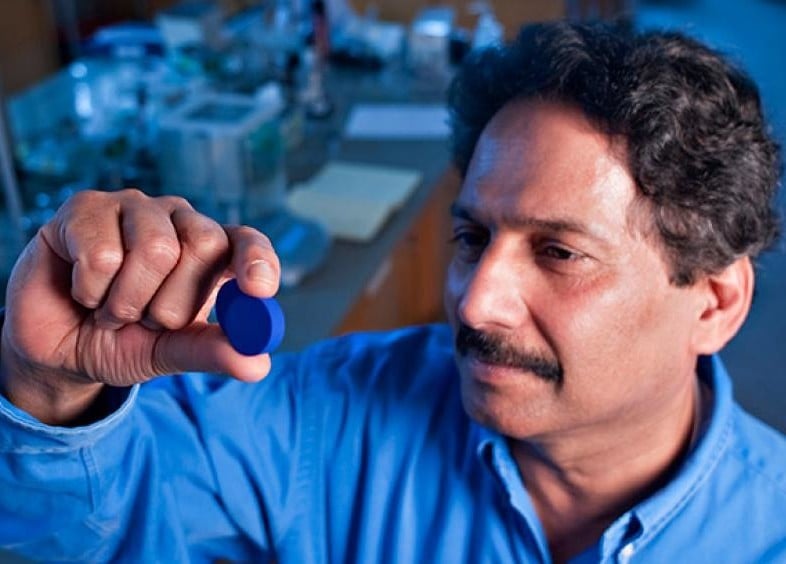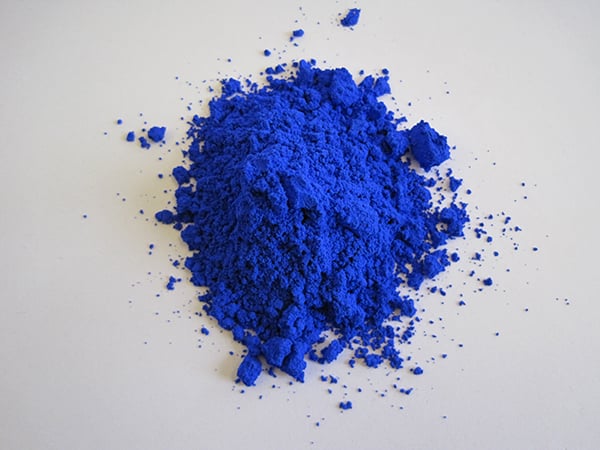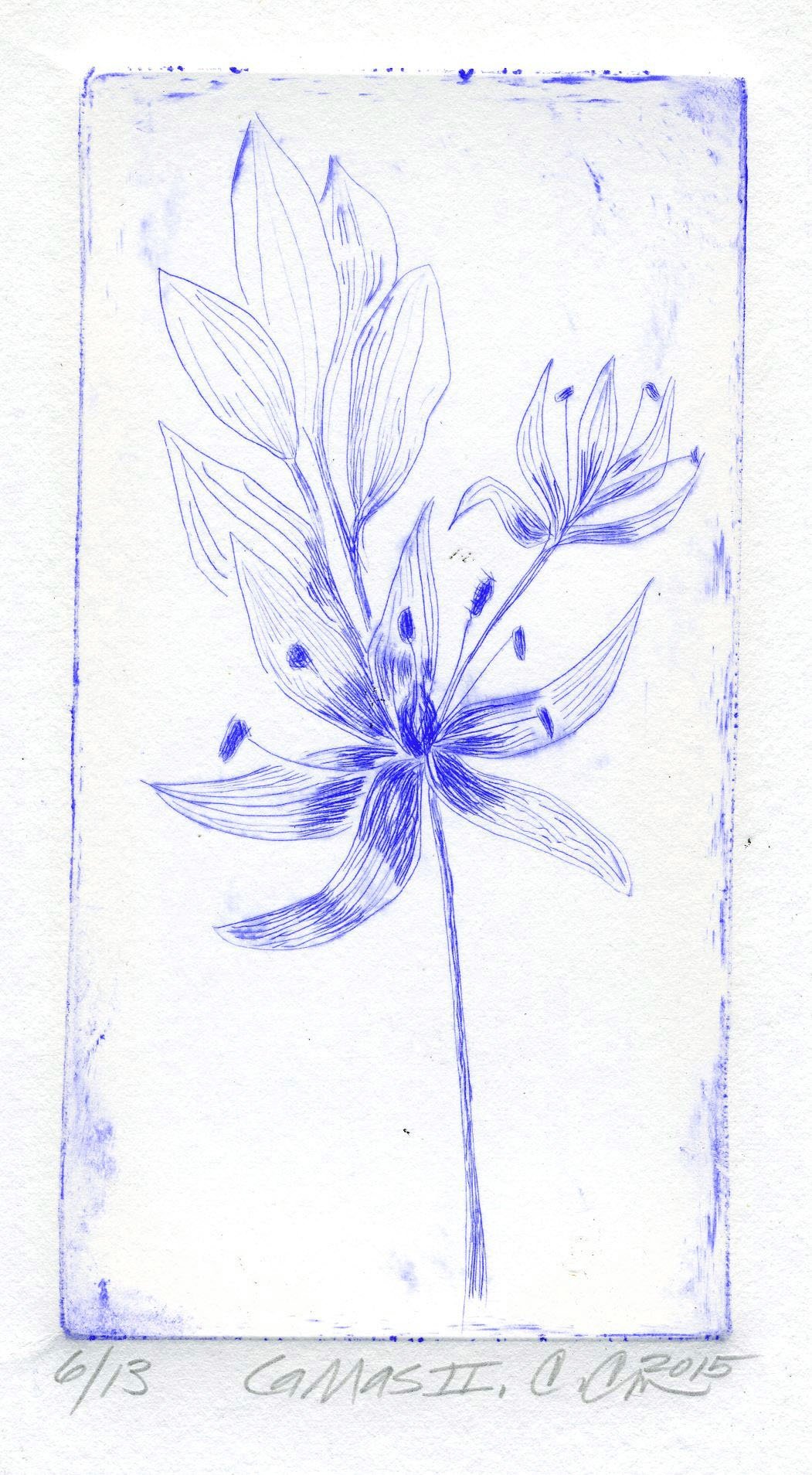Art World
The Chemist Who Discovered the World’s Newest Blue Explains Its Miraculous Properties
The new pigment is called YInMn blue, and it doesn't fade.

The new pigment is called YInMn blue, and it doesn't fade.

Sarah Cascone

The world’s newest shade of blue, a brilliantly bright, durable pigment called YInMn blue, has been licensed for commercial use and is already in the hands of some artists.
The pigment was discovered in 2009 by chemist Mas Subramanian and his team at Oregon State University while they were conducting experiments connected to electronics. For one series of tests, the scientists mixed black manganese oxide with a variety of chemicals and heated them to 2,000 degrees Fahrenheit. (The name comes from the pigment’s elemental makeup, which includes Yttrium, Indium and Manganese.)
In a serendipitous accident, one of the resulting samples turned a vivid shade of blue. Further testing found that the unique crystal structure of the resulting compound kept the color from fading, even when exposed to oil or water.

The newly-discovered YInMn blue is now commercially available from the Shepherd Color Company. Courtesy of Oregon State University.
“Ever since the early Egyptians developed some of the first blue pigments, the pigment industry has been struggling to address problems with safety, toxicity and durability,” said Subramanian in statement released by OSU. Existing blue pigments include ultramarine, made from ground lapis lazuli, and toxic alternatives such as cobalt blue and Prussian blue, making OSU’s discovery a major breakthrough, and the first new blue in over 200 years.
YInMn, Subramanian added, is “more durable, safe and fairly easy to produce… it also appears to be a new candidate for energy efficiency,” as it reflects a large amount of infrared light. A roof painted in YInMn blue could potentially help keep the building cooler.
“This new blue pigment is a sign that there are new pigments to be discovered in the inorganic pigments family,” added Geoffrey T. Peake, the research and development manager of the Shepherd Color Company, which has licensed the patent is already selling samples of YInMn blue. The pigment is still undergoing testing before it is made more widely available.

Carol Chapel, CaMas001, made with YInMn blue using DryPoint printing. Courtesy Carol Chapel.
Speaking to artnet News by phone, Subramanian said that the future of this new blue looked promising. “Several companies have been working with [Shepherd Color Company],” he revealed, citing Pittsburgh Paints and Glass as one example.
The chemist has also been fielding plenty of inquiries about his discovery from people on the more creative end. “I have sent samples to artists who have used the pigment in their artwork,” he said. So far, those artists have been mainly local, including OSU applied visual arts major Madelaine Corbin, who has been making her first foray into chemistry as intern in Subramanian’s lab, while using YInMn blue in her artwork.

Madelaine Corbin, OSU Memorial Union Façade. Courtesy Oregon State University.
Subramanian has also fielded interest from art restorers. “Our pigment is useful for art restoration, because it is similar to ultramarine but really more durable,” he explained.
He’s perhaps most proud of YInMn’s inclusion in the Forbes Pigment Collection at the Harvard Art Museums, which serves as world history of color, with some pigments dating back to the Middle Ages. Already assured a place in history, YInMn seems to have a bright future ahead of it—something Pantone might want to keep in mind when selecting its next color of the year!